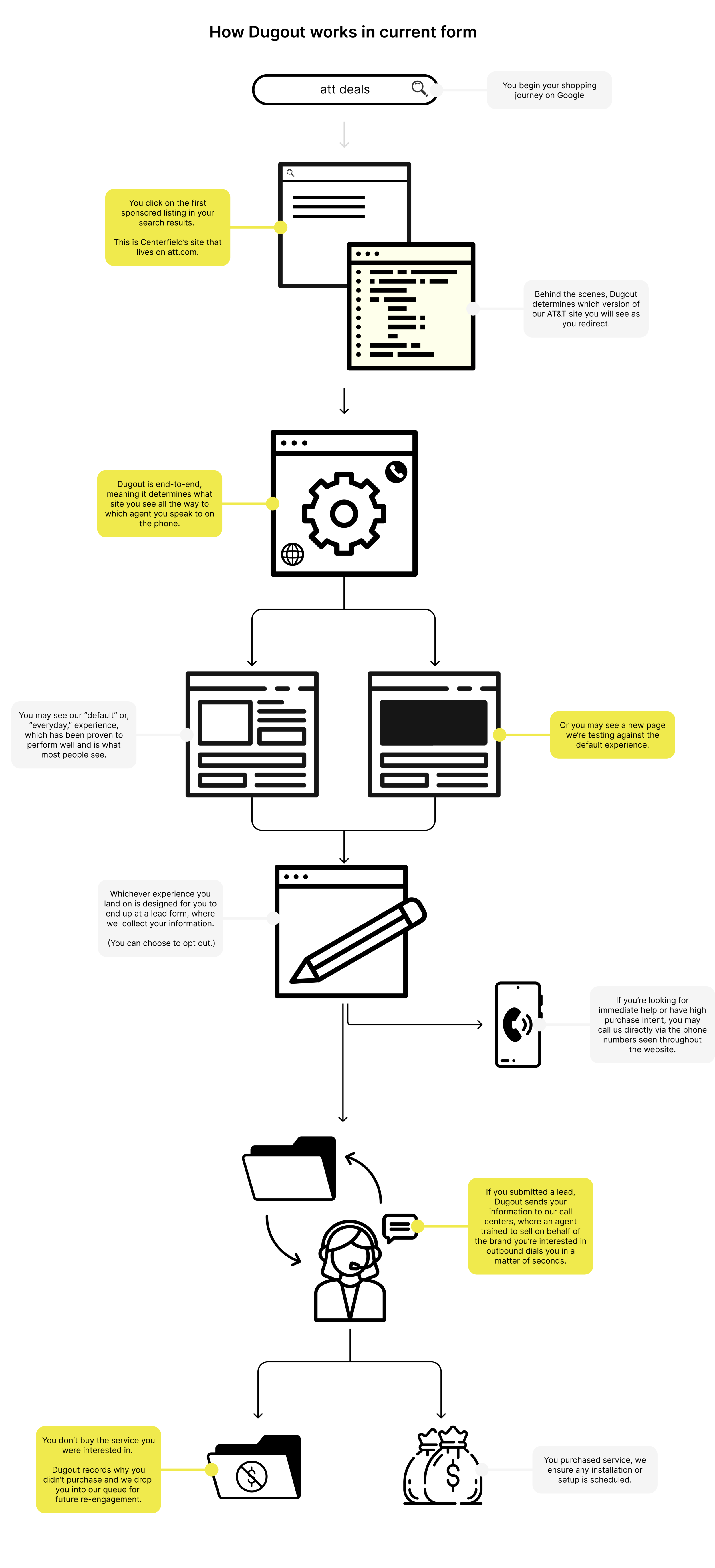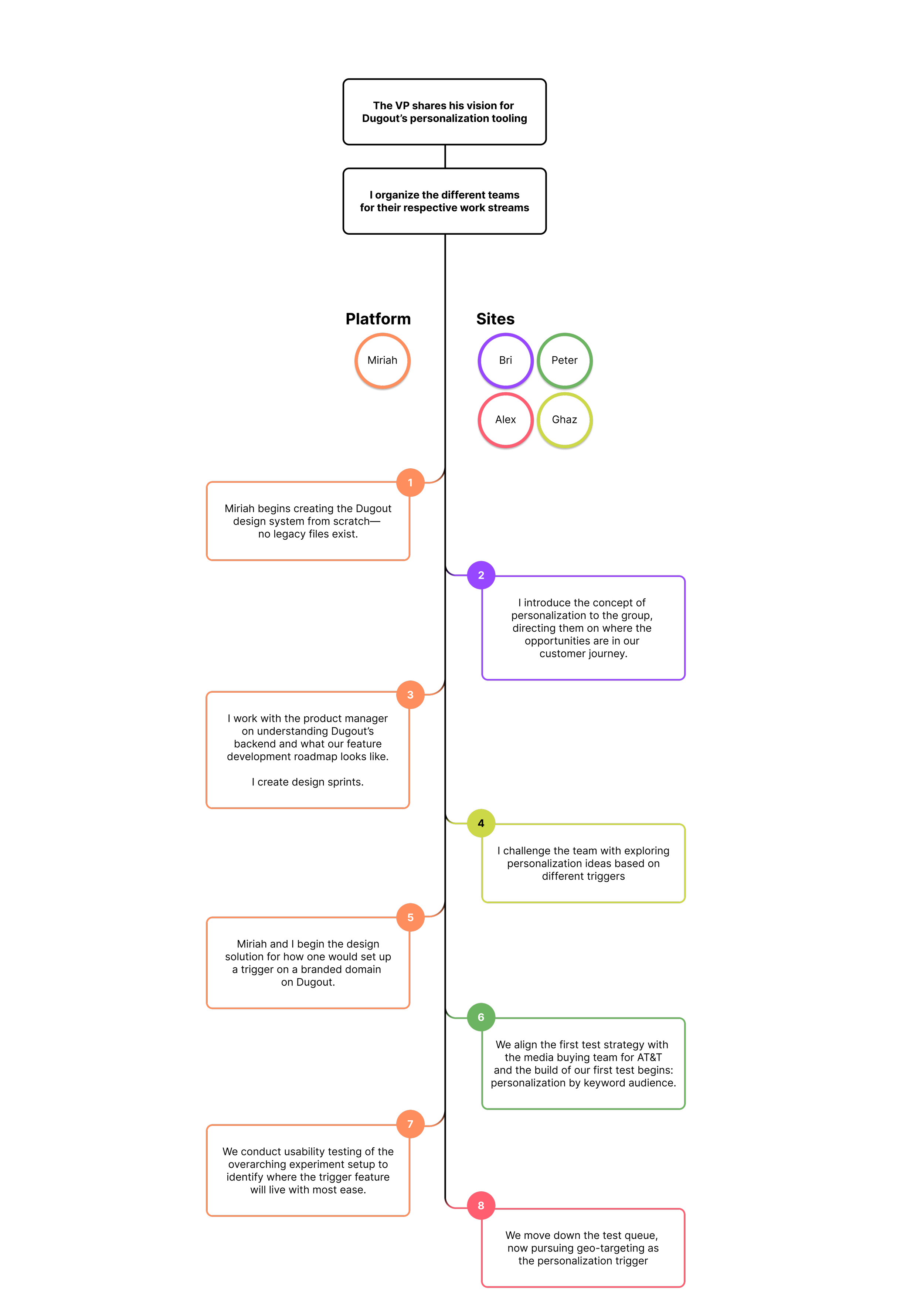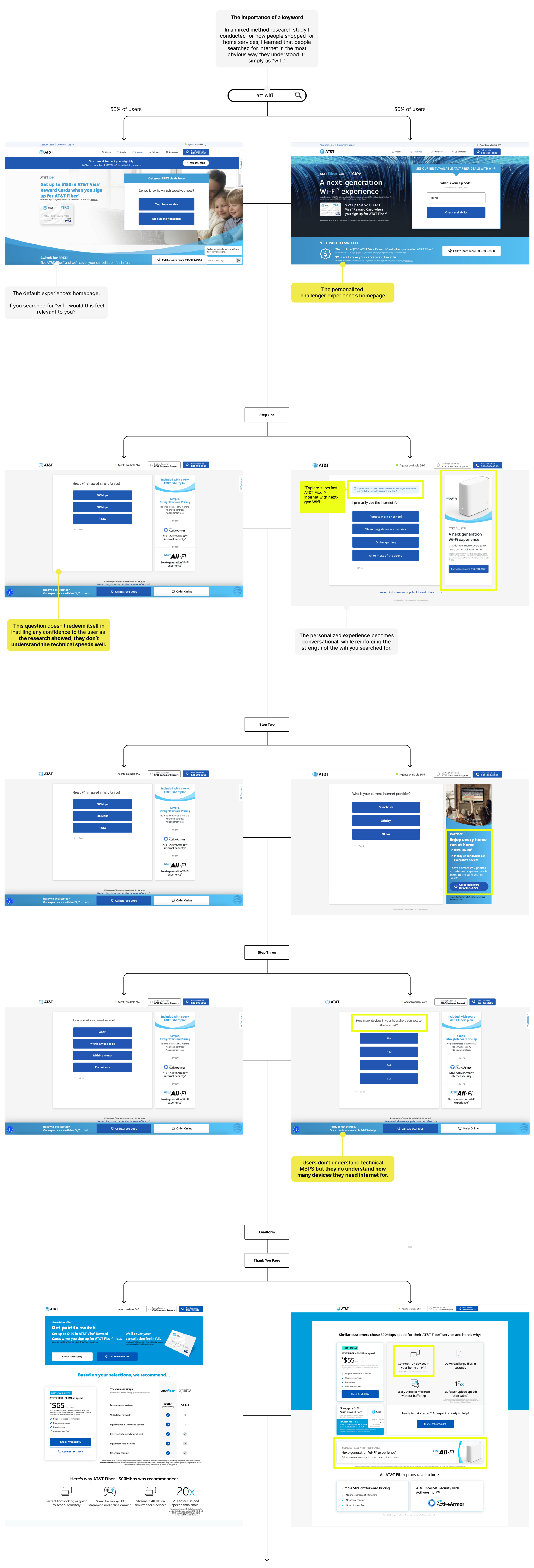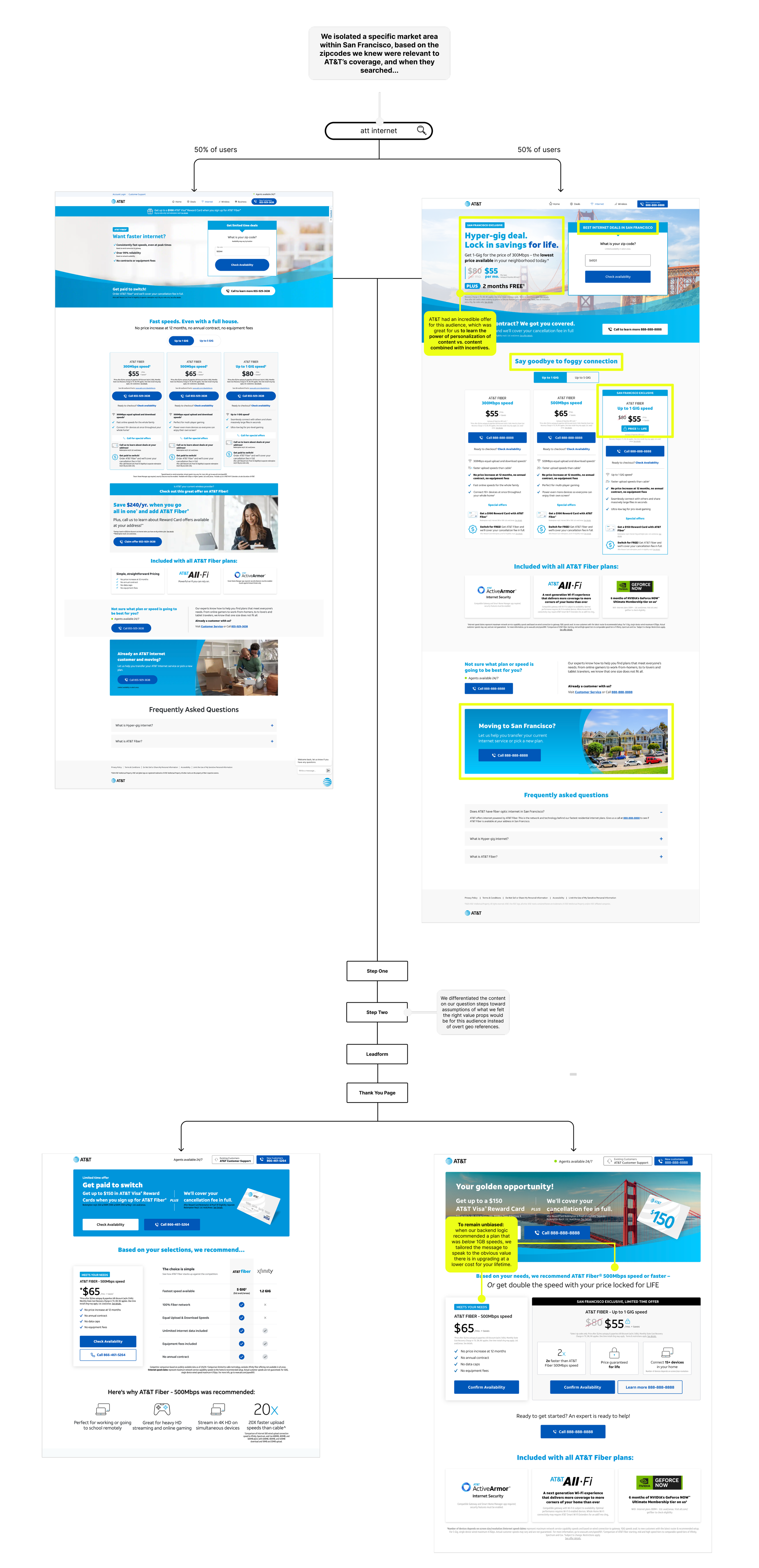| Leading a platform’s MVP build to success
Dugout:
From 0 to 1
The win:
Proved the value of in-platform personalization, driving a +457% sales lift in one of our tests.
My Role:
Director of Product Design
Stakeholders:
VP of Product
EVP of Engineering
Timeline:
3 months
Team:
Product Designer, Platform
Sr. Product Manager, Platform
Lead Product Designer, Sites
Product Designer, Sites
Centerfield acquires customers for nationwide brands with websites we own and operate on their behalf.
Dugout is the backend software that manages all of the customer journey points in their entirety, simplifying coordination and tracking all the touch points’ data.
As valuable as this software had been to us and our differentiation in the industry, it was limited in its capabilities for the innovation we wanted to scale into.
Wait, what exactly is Dugout?
🪨
☁️
🪨
☁️
🌴
☁️
🌳
☁️
🌴
🚀
☁️
🌳
🪨
☁️
🌴
☁️
🌴
🌕
The VP of Product imagined a new arm of Dugout that would enable powerful personalization.
We just needed to prove out it’s revenue potential to scale the investment, first.
00.
A project of this scope meant I had to structure it between two teams in lock-step.
01.
We began with an early shape of Dugout’s design system.
02.
I then introduced our personalization strategy to the sites team for our discovery and experiment roadmapping.
03.
From there, I learned Dugout’s backend in order to understand the constraints of how our platform design solutions will be engineered.
04.
The sites group began discovery exploring different concepts of what could be a “trigger” for personalizing our experiences, like time of day:
This test increased sales by
In the site group, we ran our first test on keyword personalization.
+44.5%.
While it was a huge win, we needed to prove our strategy was scalable to other points of personalization.
06.
07.
We rebuilt our experiment set up in Dugout, which housed the trigger flow, and tested it’s usability.
I organized the usability’s patterns and priorities, ultimately reducing the time spent building an experiment by 3 minutes in V2.
08.
Invigorated, I led the site designers into testing the next feature in the platform’s roadmap: Geo-targeting.
This test increased sales by
+47% sales.
And 34% of those sales were for 300+ speeds, customers the client valued most.








